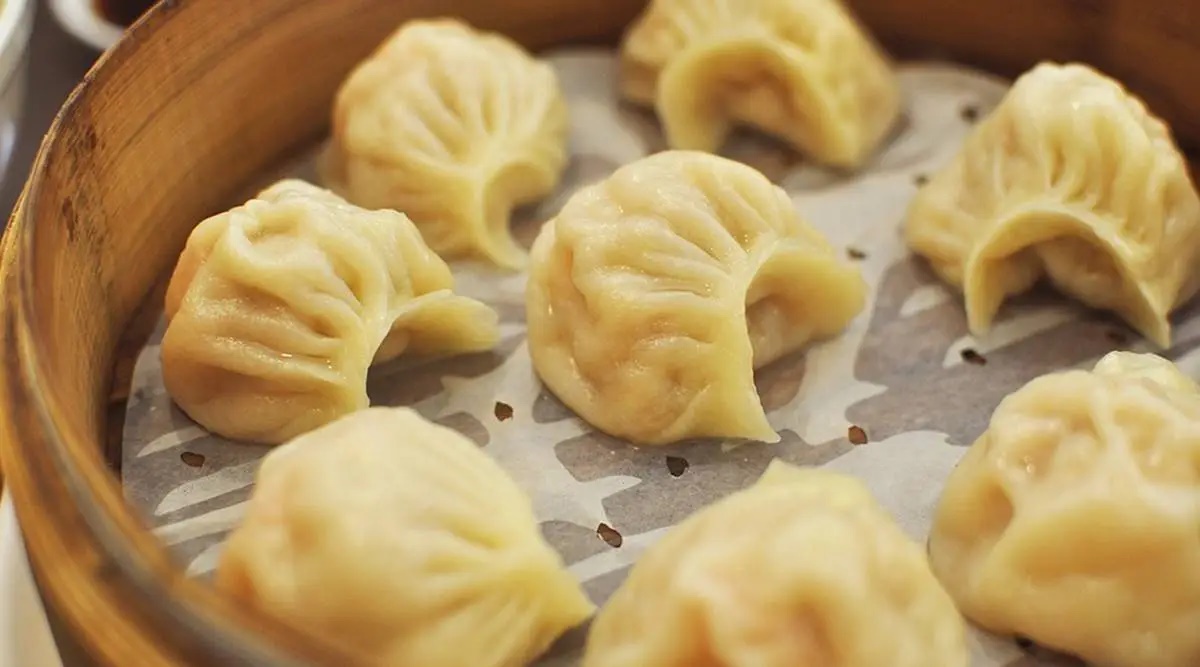 Momos or not, it is important to chew your food properly (Source: Pixabay)
Momos or not, it is important to chew your food properly (Source: Pixabay)According to a study– Corpus Alienum captured in Post Mortem Computed Tomography, death due to an accidental ingestion of “Momos (Dumpling)” — a man lost his life suddenly when he was munching a momo (dumpling).
The report stated that the cause of death using Post Mortem Computed Tomography (PMCT) detected a “foreign body lodged in upper airway”. “Here, the authors are reporting a case, where the deceased lost his life suddenly when he was munching a momo (dumpling). India is in the initial stages of virtual autopsy and has only been started in the premier Institute of the country, All Indian Institute of Medical Sciences (AIIMS), New Delhi,” the report published in Journal of Forensic Imaging read.
The study mentions “choking as a condition where there is an obstruction in the airway at any place between pharynx and bifurcation of trachea. The choking is caused by internal and external blockage.”
Best of Express Premium
a popular street food item that contains different types of fillings like paneer, chicken, vegetables, and more, are known for their slippery and smooth texture. Streamed or fried, they are relished with a variety of dips and sauces.
“The virtual autopsy of the deceased indicated that choking occurs when a foreign body is too large to gain access into the trachea due to which it gets lodged in the posterior hypopharynx (the bottom part of the tube connecting the food pipe and windpipe), resulting in blockage of the respiratory tract,” the report further said.
In simple words, choking is caused when a piece of food or other object gets stuck in the windpipe. “That is when, instead of going to the food pipe, as in normal circumstances, the food accidentally goes into the windpipe,” explained Dr Tehsin A Petiwala, consultant gastroenterologist, endoscopist, and hepatologist, Masina Hospital.
Can it only happen when eating momos? No. Doctors stress it can happen while eating any food, “which is why chewing is necessary rather than swallowing foods.”
 According to the report, sudden unexpected deaths due to blockage of the airway by a large bolus of food are not very common (Source: Getty Images/Thinkstock)
According to the report, sudden unexpected deaths due to blockage of the airway by a large bolus of food are not very common (Source: Getty Images/Thinkstock) “Usually, if a minute fragment of food goes into the wind pipe, cough reflex is initiated immediately and the particle is thrown out. This event of the death of the person from eating momos is one-of-a-kind; but can also happen while eating other foods like popcorn, nuts, candies, chewing gum, etc. Choking is usually seen in infants and children who have a tendency to not chew the food properly or put objects into the mouth accidentally. Talking or laughing while eating or not chewing properly can also lead to choking,” Dr Petiwala said.
According to the report, sudden unexpected deaths due to blockage of the airway by a large bolus of food are “not very common”. The incidence of asphyxia by food is found to cause 0.66 fatalities per 1,00,000 of the general population every year, it read.
Things to keep in mind when eating
Try to sit down properly while eating. “Keep a close watch on children when they are eating. Ensure to give them small bites to avoid choking hazards,” said Dr Jinal Patel, dietitian, Apollo Spectra Hospital, Mumbai.
What to do in case of an emergency?
It is best not to do anything if the person is coughing forcefully and not turning a bluish colour, Dr Petiwala said. If the person is able to answer you by speaking, it is a partial airway obstruction. “Do not give the person anything to drink because fluids may take up space needed for the passage of air,” Dr Petiwala asserted.
However, someone who cannot answer by speaking and can only nod their head has a “complete airway obstruction and needs emergency help”. “Call the ambulance immediately. A maneuver called ‘Heimlich Maneuvre’ or upward abdominal thrusts given by standing backside can help to dislodge the food particle from the throat by increasing the intra-abdominal pressure suddenly. If that is unsuccessful, it’s better to give rescue breaths and chest compressions until medical help arrives,” said Dr Petiwala.
📣 For more lifestyle news, follow us on Instagram | Twitter | Facebook and don’t miss out on the latest updates!
- The Indian Express website has been rated GREEN for its credibility and trustworthiness by Newsguard, a global service that rates news sources for their journalistic standards.

